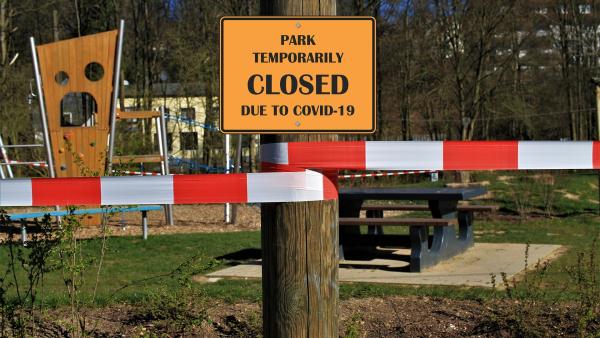"In theory, there is no difference between theory and practice - in practice, there is."
- Yogi Berra
We begin with the belief that a virus, primarily transmitted by respirations, can have its infectivity, as measured by R0, the speed at which the virus spreads, reduced by distancing individuals. This makes both common and scientific sense as the closer our contact with one another, the more likely we are to transmit the virus to one another through our exhalations. Lockdowns with quarantining of infected individuals are the most effective means we have of distancing individuals. But as Mr. Berra points out, the practical application determines how much of the theoretical impact occurs.
Lockdowns that were initiated early and that were strictly enforced seemed to save lives. Nowhere have lockdowns been more prompt and draconian than in China. Johns Hopkins reports that China's cases per 100,000 are 1.6, and in the US, 318/100,000. Of course, the problem with initiating a lockdown early is that your fears may not be well founded. Early lockdowns risk “crying wolf” when the infectious threat is not as significant as initially perceived. Remember how much higher R0 was at the beginning of the pandemic, as the virus worked through the frail in our nursing homes?
Human behavior
“There’s a fundamental difficulty with analyzing the effects of COVID-19 lockdowns: it is hard to know what would have happened in their absence.”
From the viewpoint of scientific inquiry, without a control group, it is challenging to project how many lives were saved by lockdowns – although that difficulty has not kept researchers from making those estimates. The first difficulty is that lockdown meant different measures in each country. The second and more intractable problem is our human response to the pandemic and public health guidance and mandates. Those who perceived themselves as most at risk didn’t wait for government guidance; as the Florida data on cell-phone measured movement confirms, the concerned stayed home weeks before any State imperatives. Lockdowns, by that measure, have less effect.
One of the other findings was that similar lockdowns applied in different countries (a marker of cultural differences) had very different impacts. Consider Peru, which employed early and strict measures. Despite their efforts, they experience 655 deaths per 100,000 population, the highest of any country. While, in part, due to an expensive and inadequate health system, its “large informal workforce” continued to shop and work, making enforcement difficult and blunting the efficacy of lockdowns on transmission. In a country as culturally diverse as the US, local human behavior may have just as easily mitigated the effectiveness of lockdowns as the stay-at-home early adopters.
The accompanying graphic shows that the most effective lockdowns involved small and large groups.
“This pandemic was crying out for [a] precision public-health response because the risks associated with the public-health threat with the virus were so focused on a small minority, and the harms done by things like lockdown were not focused on the same people.”
- Mark Woolhouse, epidemiologist University of Edinburgh
This raises the fundamental issue of whether lockdowns could have been more targeted to at-risk populations. Again, early in the pandemic, it was easy to make a case to lockdown nursing homes, the frail and the elderly. Of course, that alone was insufficient because those individuals require care and caregivers. Effective isolation of the at-risk requires us to lock down their caregivers and the caregiver’s families – all chinks in the lockdown armor.
A far greater debate has surrounded the lockdowns of schools. Again, early in the pandemic, there was no data on the impact of COVID on children; historically, children and the frail elderly are the most at-risk. Coupled with the very human desire to protect “our children,” it is not surprising that lockdowns included schools. While there was some evidence that older children, mid-teens and older, experienced COVID more like adults, there was a paucity of early data on the impact on younger children. Rather than a strategic lockdown of college or high school, all education was shut down. Even our late in the pandemic strategery of identifying at-risk neighborhoods was contentious – were cases, hospitalizations, or deaths the best or even accurate measure of risk?
“Pure economic analyses of whether lockdowns were worth it generally try to estimate the value of lives saved and compare that with the costs of economic downturns. But there is no consensus on how to make this comparison.”
Lockdowns come with costs; economic, social, educational, and psychological – all difficult to quantify. When we compare those costs to the efficacy of lockdowns, when we consider the tradeoff, any number of biases influence our findings. Despite the efforts by researchers to put a value on lives lost and economic disruptions, those seemingly objective dollar values are, in fact, subjective. Economic and social costs are less weighty when we believe every life is precious. When we think that the disruption of our day-to-day lives contributes to our well-being, the balance may tip in the other direction. These are ethical, subjective choices. Using the refrain, “follow the science,” as the explanation belittles the role of science and makes public health decisions less transparent and accountable.
“[the public needs to know more about how pandemic- control policies are decided]“That makes public-health policymaking seem less capricious because it’s reactive to both the science and values.”
- Thomas Tsai, MD T.H. Chan School of Public Health
There it is, a reminder that regulatory policy, guidelines, mandates, and the acceptance and push-back they engender are human enterprises. The difficulty in disentangling our facts from our beliefs is part of being human. A little humility from both our public officials and their opponents is in order.
Source: What Scientists Have Learnt From Covid Lockdowns Nature Magazine





